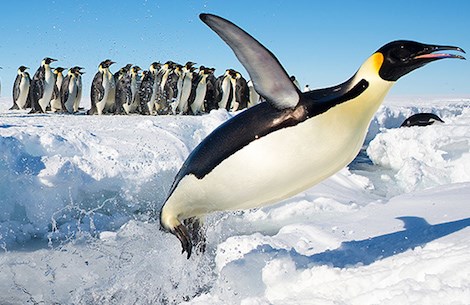Why Don't Antarctic Penguins Freeze? Their Finished Surface.
Research group discovered that particular hydrophobic oil from a gland comes into contact with a nanostructured porous surface.

Antarctic penguins are masters in adapting to their environment. Penguins dive through freezing cold water and yet they are able to move on land afterwards in extremely low temperatures of around -40°C without their feathers freezing.
Featured Content
Kruss Gmb from Germany reports that their cooperation partner, Prof. Pirouz Kavehpour from the Department of Mechanical and Aerospace Engineering of the UCLA and his team, carried out research into this property of penguin plumage so essential for their survival. The findings were presented for the first time on November 22 at the 68th Annual Meeting of the APS Division of Fluid Dynamics in Boston. The team examined the extremely hydrophobic feathers in a special microscopic process and with our Drop Shape Analyzer – DSA100 for contact angle measurement.
The research group discovered that a particular hydrophobic oil from a special gland comes into contact with a nanostructured porous surface. The feathers textured and sealed in this way display an extremely high water contact angle of over 140 degrees. Round drops with a very small contact surface form on the feathers. This results in low heat transfer and makes water drip off quickly, so the water is no longer on the feathers when it freezes.
This topic has already awoken far-reaching interest outside of the sphere of university research. In addition to popular scientific media such the BBC and the Huffingtonpost have also published articles dedicated to the plumage of these amazing birds.
However, the properties of penguin feathers are not only interesting for animal lovers. The aerospace industry in particular has taken notice of the new possibilities of keeping surfaces clear of ice; a sector where freezing presents a high safety risk and until now has required great effort to prevent. The new findings could especially improve material development in aircraft construction.
“It's a little ironic that a bird that doesn't fly could one day help an airplane fly more safely,” concludes Prof. Kavehpour.


















